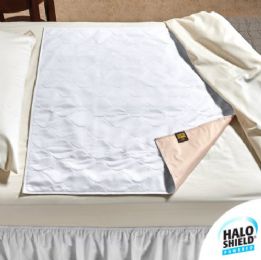










Types and Uses of Incontinence Pads
It is generally agreed that pads constructed with polyurethane tend to be much more effective than those made with cotton because they contain a waterproof backing, allowing for greater air circulation, which reduces the risk of sores and rashes.
These pads are most commonly used in the healthcare industries as a precaution to protect against urinary incontinence. They come in a variety of styles, such as panty-liners, inserts, replacement underwear, or as a seat or a bed pad, which is placed in an undergarment, on a bed, or on a chair underneath a person.
Incontinence pads are used in healthcare settings where urinary incontinence is an issue. In addition, incontinence pads are necessary for adults with various conditions, including mobility impairment, severe diarrhea, dementia, or other conditions that may cause them to experience urinary or fecal incontinence, due to the inability to control their bladder or bowels. There are also several cases of people, with good control of their bladder or bowels, who use them if they are bedridden or wheelchair-bound since they may have greater difficulty in accessing the toilet independently.
The Importance of Healthy Skin Maintenance with Incontinence
Incontinence affects more than 25 million Americans and can result in seriously adverse skin effects when not treated immediately or properly. The skin is the largest organ of the human body and protects us from a multitude of external influences. Therefore, it is very important to maintain a healthy skin condition.
The residual enzymes and bacteria found in urine and feces directly contribute to the breakdown of the skin. The bacteria, when exposed to the skin for an extended period of time, causes the skin to break down, becoming more porous, which, in turn, makes way for more serious skin conditions since the risk of bacterial invasion is increased.
For older adults, with thinner skin, the risk is much greater due to the lack of elasticity and its vulnerability in becoming more damaged due to age. In addition, incontinence can cause skin rashes and sores on the surface of the skin, if exposed to urine for too long, which increases the chances of more serious side effects occurring, due to the exposure of open wounds to other sources of bacteria or fungal infections. Once the skin is macerated, even gentle rubbing from bed linens, sheets, or wash cloths can cause severe injury.
To mitigate the effects of incontinence such as skin breakdown, incontinence pads should be changed frequently and as soon as soiling occurs to avoid excessive skin wetness. There are many formulated skin products on the market that help to maintain a healthy skin pH, between 4 to 7 pH. It is recommended that these products be used in combination with incontinence pads. Other ointments, such as diaper rash cream, can also help in minimizing direct contact of skin with urine and feces. Be sure to avoid silicone-based creams and ointments since these products can block the absorbency layer, trapping urine next to the skin.
Adult absorbent pads are not a treatment for incontinence, but a management tool. These products offer the security of knowing that if a leakage should occur, something is in place to absorb it.
Rehabmart is pleased to offer a wide selection of washable underpad from such superior quality vendors as Independence Medical, Posey, Salk Inc., and Medline.
Hulet Smith, OT
Rehabmart Co-Founder & CEO
kw